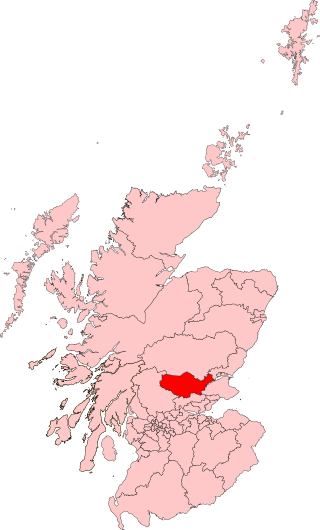
Glasgow Central is a constituency of the House of Commons of the Parliament of the United Kingdom. In its current form, the constituency was first used at the 2005 general election, but there was also a Glasgow Central constituency that existed from 1885 to 1997. The sitting MP is Alison Thewliss of the Scottish National Party (SNP), who was first elected in May 2015. This constituency was also the seat of the former Conservative Prime Minister Bonar Law, who was the shortest-serving UK Prime Minister of the twentieth century.
Glasgow Springburn was a constituency of the House of Commons of the Parliament of the United Kingdom from 1918 until the 2005 general election, when it was largely replaced by the Glasgow North East constituency.

Edinburgh Central was a burgh constituency of the House of Commons of the Parliament of the United Kingdom from 1885 to 2005. It elected one Member of Parliament (MP) by the first past the post system of election.
Greenock was a burgh constituency represented in the House of Commons of the Parliament of the United Kingdom from 1832 until 1974, when it was abolished and its area was merged into the new Greenock and Port Glasgow constituency.
Glasgow Bridgeton was a parliamentary constituency in the city of Glasgow. From 1885 to 1974, it returned one Member of Parliament (MP) to the House of Commons of the Parliament of the United Kingdom, elected by the first-past-the-post voting system.

Glasgow Camlachie was a burgh constituency represented in the House of Commons of the Parliament of the United Kingdom from 1885 until 1955.
Glasgow Gorbals was a parliamentary constituency in the city of Glasgow. From 1918 until 1974, it returned one Member of Parliament (MP) to the House of Commons of the Parliament of the United Kingdom, elected by the first-past-the-post system.
Glasgow Govan was a parliamentary constituency in the Govan district of Glasgow. It was represented in the House of Commons of the Parliament of the United Kingdom for 120 years; from 1885 until 2005, returning one Member of Parliament (MP) elected by the first-past-the-post system.
Glasgow Hillhead was a parliamentary constituency represented in the House of Commons of the Parliament of the United Kingdom from 1918 until 1997. It elected one Member of Parliament (MP) using the first-past-the-post voting system.
Glasgow Kelvingrove was a burgh constituency represented in the House of Commons of the Parliament of the United Kingdom from 1918 until 1983. It elected one Member of Parliament (MP) using the first-past-the-post voting system. In February 1974 it absorbed the entire Glasgow Woodside Constituency which had existed from 1950 but lost the part of the Exchange Ward it had previously included to Glasgow Central.
Glasgow Pollok was a burgh constituency represented in the House of Commons of the Parliament of the United Kingdom from 1918 until 2005, when it was replaced by Glasgow South West. It elected one Member of Parliament (MP) using the first-past-the-post voting system.

Glasgow Shettleston was a burgh constituency represented in the House of Commons of the Parliament of the United Kingdom from 1918 until 2005. The Shettleston area's representation is now covered by Glasgow Central and Glasgow East.
Glasgow St. Rollox was a burgh constituency represented in the House of Commons of the Parliament of the United Kingdom from 1885 until 1950. It elected one Member of Parliament (MP) using the first-past-the-post voting system.

Glasgow Tradeston was a burgh constituency represented in the House of Commons of the Parliament of the United Kingdom from 1885 until 1955. It elected one Member of Parliament (MP) using the first-past-the-post voting system.
Glasgow Maryhill was a parliamentary constituency represented in the House of Commons of the Parliament of the United Kingdom from 1918 to 2005 when it was subsumed into the new Glasgow North and Glasgow North East constituencies. It elected one Member of Parliament (MP) using the first-past-the-post voting system.

West Renfrewshire was a county constituency of the House of Commons of the Parliament of the United Kingdom from 1885 to 1983 and again from 1997 until 2005. In 2005 the constituency was abolished and the area is now represented by Inverclyde, Paisley and Renfrewshire North and Paisley and Renfrewshire South.

Perth was a constituency of the House of Commons of the Parliament of the United Kingdom from 1832 to 1918, 1918 to 1950, and 1997 to 2005. From 1832 to 1918 it was a burgh constituency. From 1918 to 1950, and 1997 to 2005, it was a county constituency. During each of the three periods it elected one Member of Parliament (MP).
Glasgow Blackfriars and Hutchesontown, representing parts of the city of Glasgow, Scotland, was a burgh constituency represented in the House of Commons of the Parliament of the United Kingdom from 1885 until 1918.
Partick was a county constituency represented in the House of Commons of the Parliament of the United Kingdom from 1885 until 1918.







